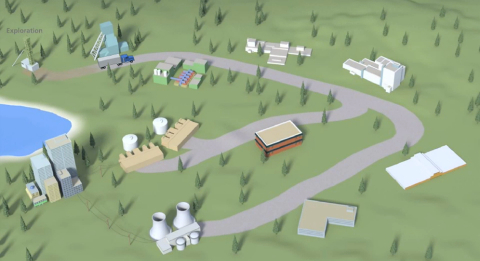Nuclear Fuel Cycle
There are many steps in the journey from discovery of uranium to its use in generating electricity. The transformation of uranium ore to nuclear fuel, and the reprocessing and long-term management of spent-fuel, is described as the nuclear fuel cycle.
Once a deposit has been evaluated as economic to mine, the following stages are undertaken:
-
Mining & Milling to produce uranium concentrate known as yellowcake
-
Refining & Conversion of the concentrated uranium into either uranium dioxide (UO2) for heavy water reactors or gaseous uranium hexafluoride (UF6) for light water reactors
-
Enrichment, which increases the proportion of the rarer 'fissile' form of uranium, U235, which is the essential component of nuclear fuel
-
Fuel Manufacture, where the uranium is manufactured into fuel pellets
-
Electricity Generation, where nuclear fuel is loaded into a reactor and nuclear reactions generate electricity.
-
Spent Fuel Management, spent nuclear fuel is safely stored as it cools, optionally reprocessed or moved into secure long-term storage.







